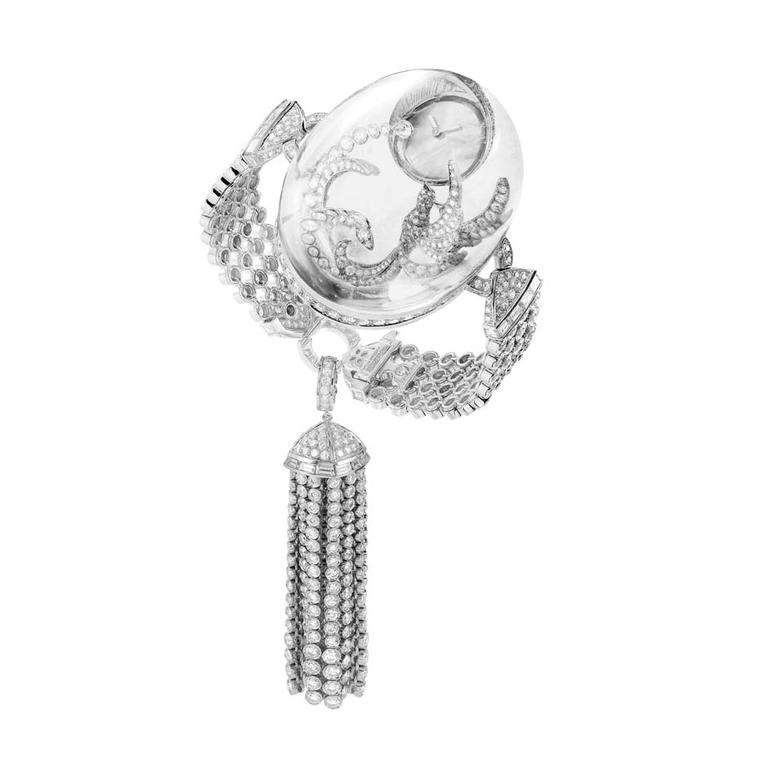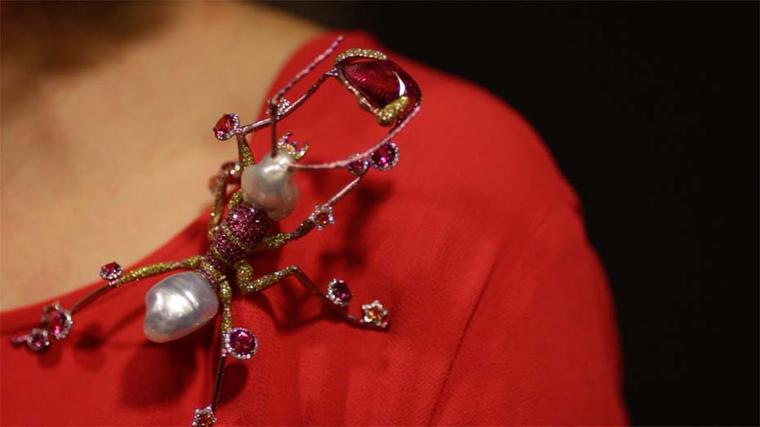
Cartier has created a transformable piece of jewellery that can be worn as a tiara or a necklace thanks to an innovative sliding system. Hidden within the beautiful ripple of pearls and diamonds is a highly complex mechanism that allows the wearer to change the arc of the jewel to follow the contours of the neck or the forehead. The central pearl, still in its original diamond setting, can be detached from the main piece and worn as a pendant. Cartier has also created a pair of earrings with matching drop-shaped pearls to complete the set.
While the technical know-how behind this remarkable jewel is sure to be a talking point at the Biennale des Antiquaires, so is the historic provenance and exceptional quality of the central pearl.
Believed to have been harvested in the waters of the Persian Gulf, it once belonged to Queen Mary of England, wife of George V, who passed it down to her daughter. Born in 1897 and also named Mary, the princess was photographed wearing the pearl on many occasions. She in turn bequeathed it to her son George Lascelles, Earl of Harewood, who gave it to his wife Patricia on their wedding day.
Weighing an impressive 8.3 grams and measuring 21.82 x 17.6 x 16.4 mm, the pearl is said to be one of the most beautiful ever seen thanks to its perfectly symmetrical shape and silvery lustre. It is similar to the famous Peregrina pearl that was made into a necklace by Cartier for Elizabeth Taylor in the 1970s.
Pearls have a rich history and decorated amulets and necklaces as early as the 5th century BC to symbolise prosperity, faith and loyalty. At the start of the 20th century, these treasures of the sea were much sought-after at auction and considered a shrewd investment, on a par with property.
Considered more valuable than diamonds, pearls accounted for more than half of Cartier's revenue until the end of the 1920s. In fact, Jacques Cartier, who opened and managed the London store until he passed away in 1942, paid for the New York building that still houses Cartier's US offices with a double-strand pearl necklace worth US$1 million back in 1917.
To read more stories on the Biennale de Paris this September, please click here.











